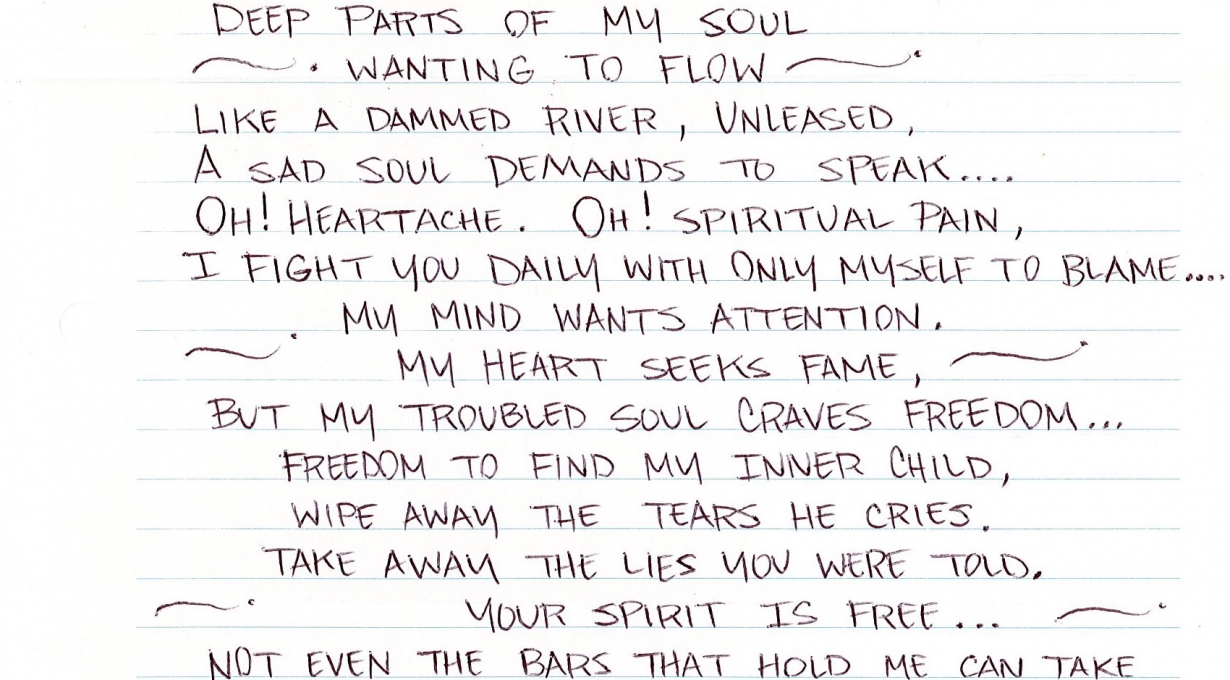Meet the Art: Muriel Rukeyser Poetry Wall

As a part of the Value of Sanctuary: Building a House Without Walls, now on view in the Cathedral, we've reinstituted the Muriel Rukeyser Poetry Wall with a printed and digital display as well as online archive. Shirley Paxton Fofang has curated the Wall and responded to her work below.
How did you first learn about the Muriel Rukeyser Poetry Wall? What were your first impressions?
I first learned about the Muriel Rukeyser Poetry Wall as a student at The Cathedral School. One afternoon in middle school, my classmates and I read through selected poetry submissions and wrote letters in response. I wish I could remember the content of the poem I read, but it’s escaped my memory. I became reacquainted with the Poetry Wall about six months ago when I started to sort through the previous years’ submissions for the online archive and the Value of Sanctuary exhibit. One of my favorite poems happened to be among the first submissions I read through, so I had a great first impression from that early poem.
What did you think about when sorting through the submissions?
I’m not sure if I was aware of this as a middle schooler, but almost all of the submissions to the Poetry Wall in the last fifteen or so years have been from incarcerated people. While sorting through the submissions, I thought about the hands that wrote those letters, my sense that each one was a message in a bottle sent out to a program most of the writers had never interacted with in a church most of the writers had never visited. I thought about the trust they had in sending their work, at times very personal work, and felt a responsibility to read each one.
How do you think about the Muriel Rukeyser Poetry Wall in the context of the Value of Sanctuary? And how do you think about it in the context of the Cathedral?
When I was brought on to work on this project, my wonderful colleagues explained to me the framing of the Value of Sanctuary—“building a house without walls”—and how the prisons that house most of our Poetry Wall’s poets are truly the inverse of that definition of sanctuary. The idea that the act of writing, or meditating, or thinking, can create a place of refuge while incarcerated came up in many of the poems and letters I looked through. That idea really informed my sense of how the Poetry Wall connects to the Value of Sanctuary: when your body isn’t safe or free, how can your mind, your memories, and your imagination create a sense of sanctuary within yourself?
What has been most surprising about working on the Muriel Rukeyser Poetry Wall?
I didn’t know quite what to expect, but I was surprised to find such a wide range of topics in writers’ poems: nature, life while incarcerated, family, childhood memories, love, mourning, devotional themes, and more.
How has working on the project changed how you view poetry?
Working on this project has been a reminder for me that poetry exists outside of published books and classrooms. Whether reading or writing (or both), poetry can be a meaningful part of anybody’s creative and spiritual life.
What is your Sanctuary?
My home is my sanctuary. I like the quote from The Most Rev. Michael Bruce Curry that the Cathedral used in the Value of Sanctuary exhibit: “When love is the way, the earth will be a sanctuary.” So ideally, my home is the whole earth and not just my apartment!